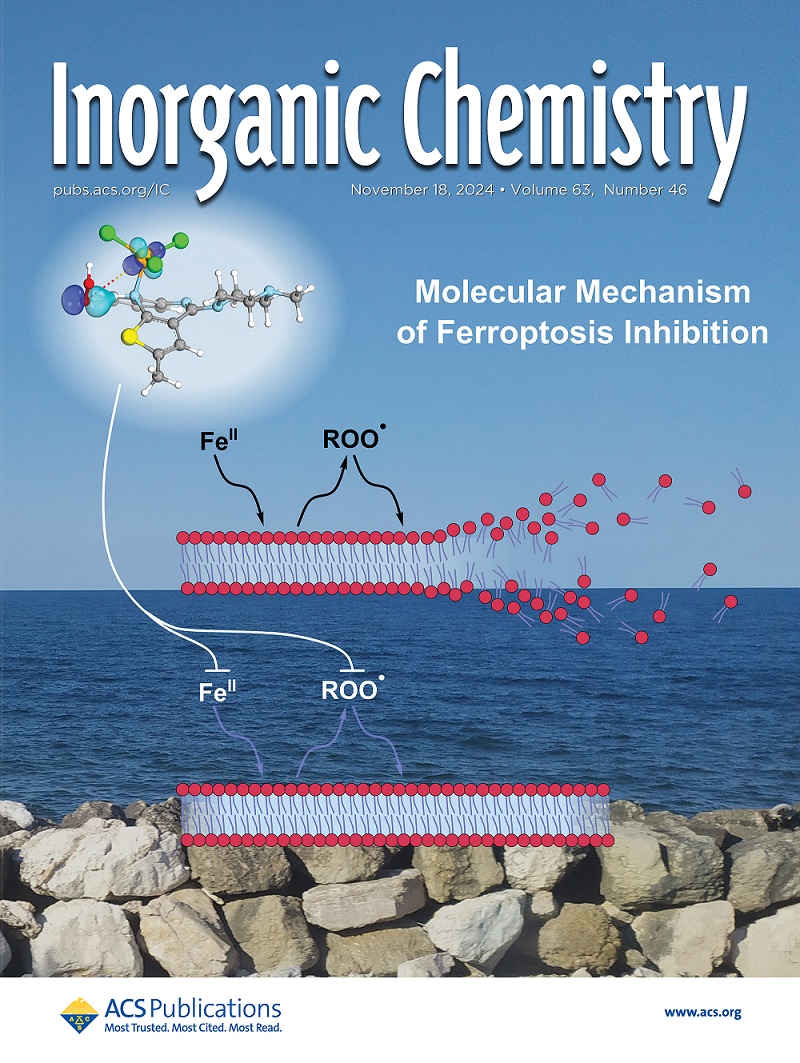Tuning the Electrical Conductivity of Bimetallic Co-Mn-Based MOFs via Precisely Regulating the Atomic Content of Metal Centers and Study on Their Dye Adsorption Properties.
IF 4.3
2区 化学
Q1 CHEMISTRY, INORGANIC & NUCLEAR
引用次数: 0
Abstract
Conductive metal organic frameworks (MOFs) are considered as next-generation conducting materials. However, imparting conductivity to this class of materials faces significant challenges owing to their inherently insulating nature. Therefore, herein, a series of isostructural conductive bimetallic MOFs with the structural formula {[(CH3)2NH2][MnxCoy(HCOO)6]} (x = 1, y = 0.2-3.32) were developed. Decomposition of dimethylformamide under solvothermal conditions resulted in a formate ligand and dimethylammonium (DMA) cations, responsible for construction of MOFs and proton conductivity, respectively. The conductivity was also attributed to electron flow through the metal-ligand bonds. MOF1 with a 1:1 Mn/Co ratio showed conductivity as high as 19.73 S cm-1 at 25 °C. Notably, the conductivity may be tuned via regulating the metal content; varying the Mn/Co ratio from 1:0.20 to 1:3.32 resulted in MOFs with conductivities from 0.08 to 19.73 S cm-1 at 25 °C. Even after removal of DMA molecules from pores, the conductivities of the MOFs were impressive owing to the enhanced electron density difference between the metal centers as a result of oxidation of Co2+ to maintain the charge neutrality of the framework. Additionally, the MOFs were found to be effective adsorbents of anionic dyes such as methyl blue owing to the presence of positively charged guests in the pores and free electrons in the frameworks.通过精确调节金属中心原子含量来调节双金属co - mn基mof的电导率及其染料吸附性能研究。
导电金属有机骨架(mof)被认为是下一代导电材料。然而,由于其固有的绝缘性,赋予这类材料导电性面临着重大挑战。因此,本文制备了一系列结构为{[(CH3)2NH2][MnxCoy(HCOO)6]} (x = 1, y = 0.2-3.32)的等结构导电双金属mof。二甲基甲酰胺在溶剂热条件下分解生成甲酸配体和二甲胺(DMA)阳离子,分别负责mof和质子电导率的构建。电导率也归因于通过金属配体键的电子流。Mn/Co比为1:1的MOF1在25℃时电导率高达19.73 S cm-1。值得注意的是,电导率可以通过调节金属含量来调节;当Mn/Co比值从1:0.20到1:3.32变化时,mof在25℃下的电导率在0.08到19.73 S cm-1之间。即使在从孔隙中去除DMA分子后,mof的电导率也令人印象深刻,这是由于Co2+氧化导致金属中心之间的电子密度差增强,以保持框架的电荷中性。此外,mof被发现是阴离子染料(如甲基蓝)的有效吸附剂,因为孔隙中存在带正电的客体,框架中存在自由电子。
本文章由计算机程序翻译,如有差异,请以英文原文为准。
求助全文
约1分钟内获得全文
求助全文
来源期刊

Inorganic Chemistry
化学-无机化学与核化学
CiteScore
7.60
自引率
13.00%
发文量
1960
审稿时长
1.9 months
期刊介绍:
Inorganic Chemistry publishes fundamental studies in all phases of inorganic chemistry. Coverage includes experimental and theoretical reports on quantitative studies of structure and thermodynamics, kinetics, mechanisms of inorganic reactions, bioinorganic chemistry, and relevant aspects of organometallic chemistry, solid-state phenomena, and chemical bonding theory. Emphasis is placed on the synthesis, structure, thermodynamics, reactivity, spectroscopy, and bonding properties of significant new and known compounds.
 求助内容:
求助内容: 应助结果提醒方式:
应助结果提醒方式:


